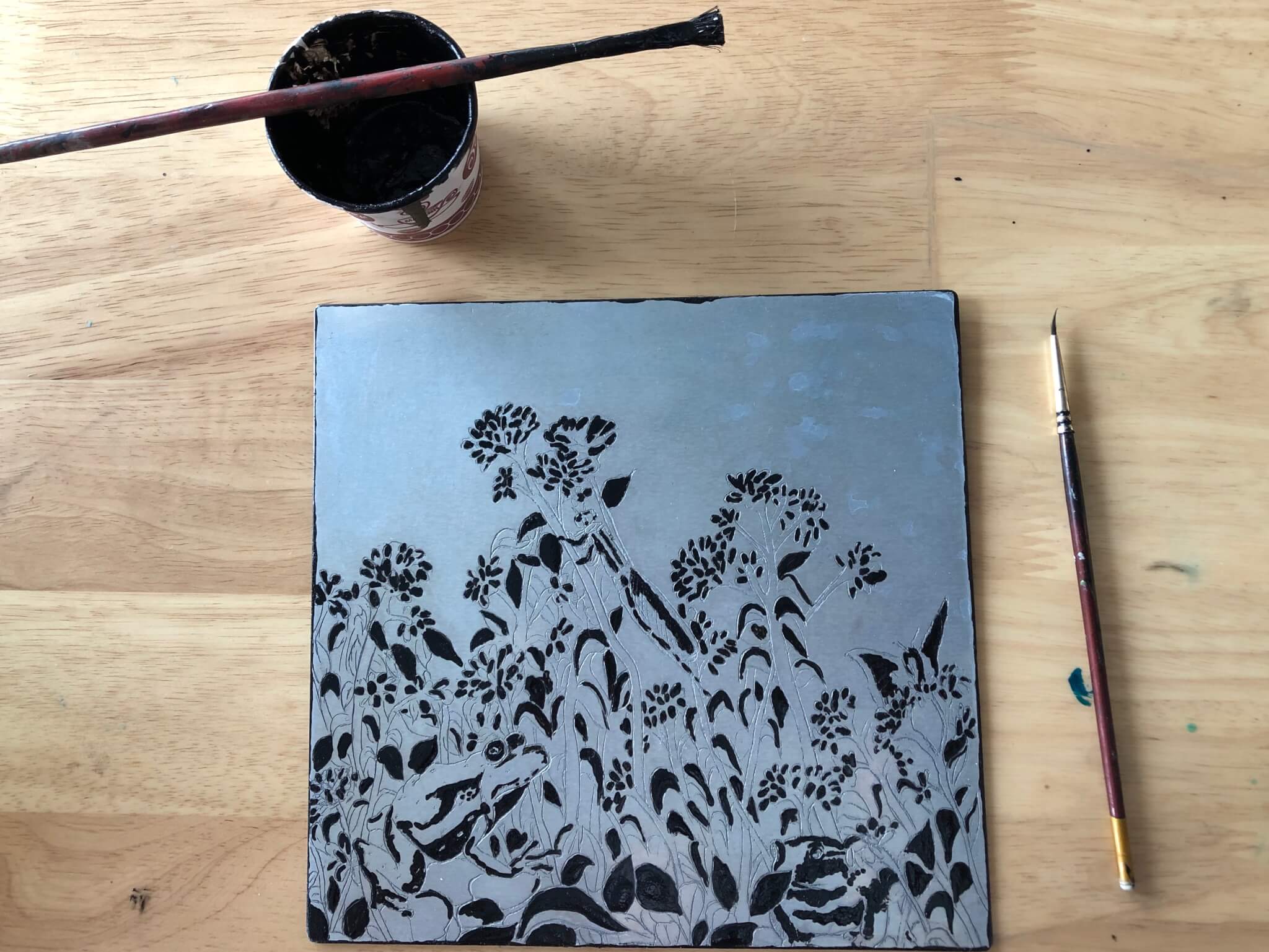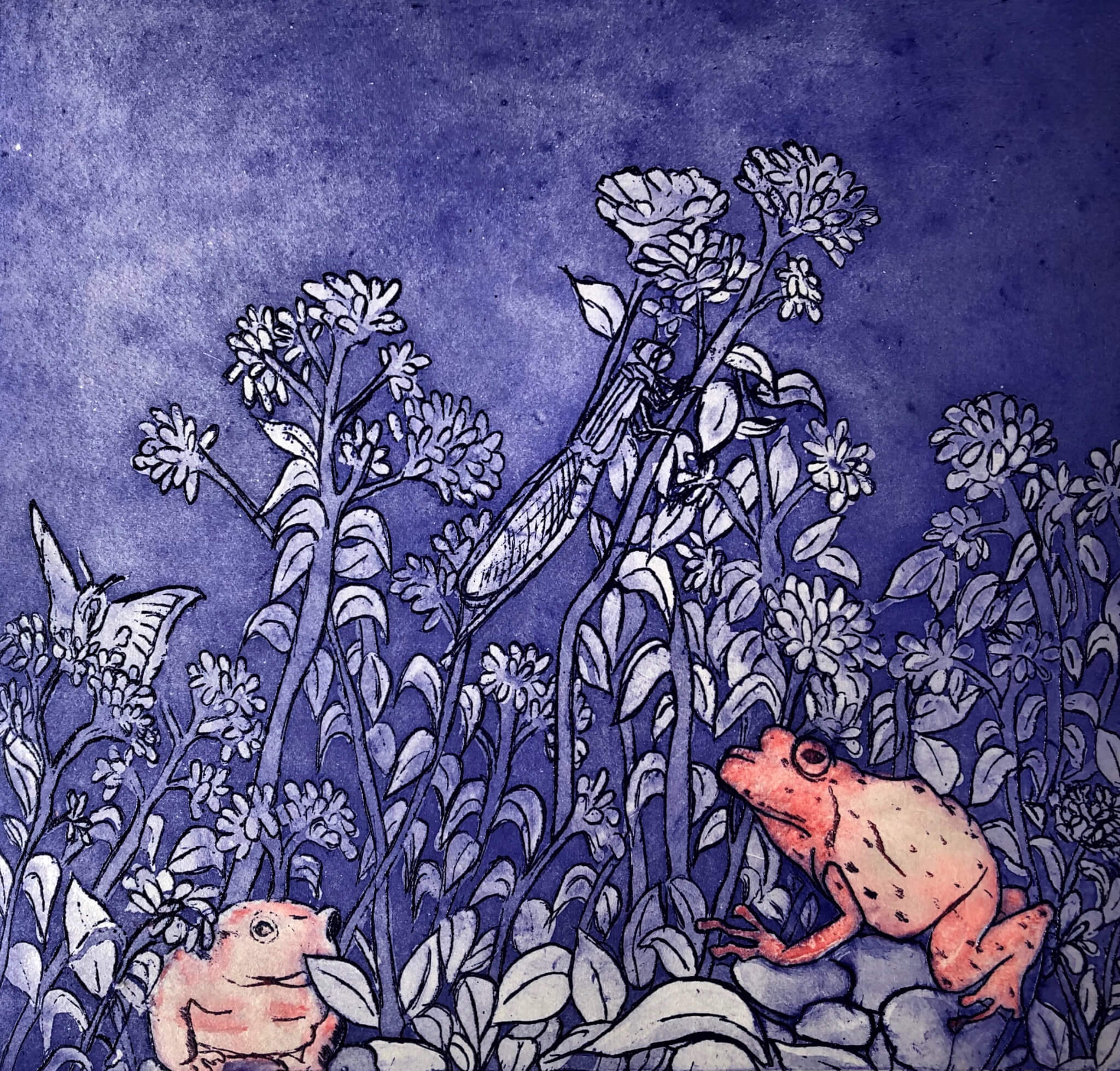
Aquatint is an intaglio printmaking technique, a variant of etching that only produces areas of tone rather than lines. For this reason, it has mostly been used in conjunction with etching, to give outlines. It has also been used historically to print in color, both by printing with multiple plates in different colors, and by making monochrome prints that were then hand-colored with water color.
In intaglio printmaking techniques such as engraving and etching, the artist makes marks into the surface of the plate (in the case of aquatint, a copper or zinc plate) that are capable of holding ink. The plate is inked all over then wiped clean to leave ink only in the marks. The plate is passed through a printing press together with a sheet of paper, and strong pressure applied pushing the paper into the marks, so that a transfer of the ink to the paper occurs. This is repeated many times.
Like etching, aquatint uses the application of a mordant (acid) to etch into the metal plate. Where etching uses a needle to scratch through an acid-proof resist and make lines, aquatint uses powdered rosin (resin) to create a tonal effect. The rosin is acid resistant and typically adhered to the plate by controlled heating; where the grains are will print white, with black areas around. The tonal variation is controlled by the level of mordant exposure over large areas, and thus the image is shaped by large sections at a time. The rosin is then washed off the plate before printing.

Disha. A moment in the forest 2019. Edition 4
